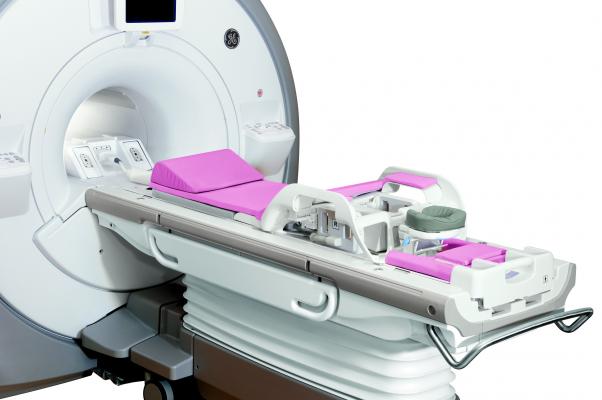
July 15, 2015 - Investigators from Norris Cotton Cancer Center at Dartmouth demonstrated that a dual breast exam using magnetic resonance imaging (MRI) and near infrared spectral tomography (NIRST) is feasible and more accurate than MRI alone. The research team - led by Keith Paulsen, Ph.D., with first author Michael Mastanduno and collaborators from Xijing Hospital in Xian, China - had their paper, "MR-guided Near Infrared Spectral Tomography Increases Diagnostic Performance of Breast MRI," published in Clinical Cancer Research.
"The research is exciting because it shows for the first time, in the largest clinical study to date of the combined MRI+NIRST imaging approach, that improvement in the specificity of breast MRI is possible by adding NIRST to the imaging procedure," explained Paulsen. "Other reports suggested that such improvement was possible, but they included small numbers of clinical exams that were not sufficiently large enough to show a statistically significant improvement."
Breast MRI is the most sensitive imaging technique for cancer surveillance and is recommended for screening in women with elevated risk of breast cancer. Unfortunately, breast MRI generates many "false positives," which are regions of the breast that "enhance" under imaging technology, but are not malignant. Better imaging could provide additional information for clinicians and potentially reduce the number of MRI-guided biopsies.
Paulsen's study investigated whether the addition of NIRST at the time of MRI would improve the diagnostic accuracy of breast MRI alone by contributing functional information about regions of suspicion in the breast identified by the MRI and helping to categorize the regions as malignant or benign. The study showed that data from the combined imaging procedure improved specificity of the exam from 67 percent for MRI alone, to 89 percent when tissue optical index (TOI) from NIRST imaging was added. The sensitivity did not decrease, remaining high at 95 percent, and the area under the curve (AUC) increased to 0.95 from 0.86 for MRI alone.
"Working with our Chinese colleagues at Xijing Hospital, we found that a combined MRI+NIRST breast exam is feasible as a clinical breast imaging procedure, and that the data from the combined imaging modalities is diagnostically more accurate," said Paulsen. "In particular, this combination improves on what is reported by breast MRI alone. With additional technical improvements related to exam set-up and delivery, the approach is ready for evaluation in larger clinical studies, including multi-center trials."
Looking forward, Paulsen plans to refine the technology to improve its clinical acceptance, making it easier to use and seamless in the standard clinical workflow of breast MRI, as well as increasing the areas of breast coverage with the NIRST sensors.
Paulsen is professor of radiology and surgery at Dartmouth's Geisel School of Medicine, and of biomedical engineering at Dartmouth's Thayer School of Engineering. Mastanduno was a graduate student at Thayer School of Engineering, and is now a post-doctoral fellow at Stanford.
For more information: www.cancer.dartmouth.edu


 December 17, 2025
December 17, 2025 









